
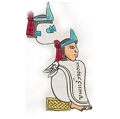
The Church of Santiago Tlatelolco was the temple of the great Colegio de la Santa Cruz de Tlatelolco. It’s mentioned separately here because it’s operated as a separate Catholic parish for many years. Frequently confused with, or understood instead of the larger colegio complex, it’s the most dominant, even stark, presence on the Plaza de las Tres Culturas. Of the three cultures represented in the Plaza, the church clearly stands in for the culture of the Mexican colonial experience. Its history is inseparable from that of the Colegio, south and west of the present temple.
The temple was begun soon after the fall of Tenochtitlan in 1521. The Spanish are said to have chosen the spot because the Mexica warriors had resisted conquest for some 80 days from this very spot. They also doubtless chose the spot for its clear ceremonial and ritual importance to the Tlatelolco people.
The Santiago Tlatelolco spot is a first-rate example of the Spanish attempt to destroy the preceding culture. The church is clearly made of the recycled remains of the surrounding temples. A fragment of a stone deity associated with farmland is still visible on the eastern side of the building, at the rear of the apse.
The temple we see today was built by the Franciscans. Under the direction of Fray Juan de Torquemada, it was completed in 1609. The same year, the Franciscans placed three altarpieces inside including the two side altars. By the 18th century, the church is said to have been was full of altarpieces and these were redone in 1763. The church only ceased functioning as a Catholic temple in 1861 and so the altarpieces were removed and much of the interior was lost. The church was finally remodeled and reopened in 1964.
Today, the Church of Santiago Tlatelolco, perhaps more than many other churches, may seem a rather sinister symbol of the Spanish colonization and the Catholic imposition over the Americas. Read the entry on the Colegio de Santa Cruz for a fuller understanding of the educational institution and its ultimate contribution to our understanding of the period. It’s something that continues even to this day. And don’t miss the other many sights to see around the Plaza de las Tres Culturas.
 +525557822138
+525557822138
 https://www.tlatelolco.inah.gob.mx/index.php/recorridoss/iglesia
https://www.tlatelolco.inah.gob.mx/index.php/recorridoss/iglesia
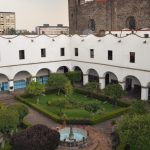
Nearest at 0.06 kms.
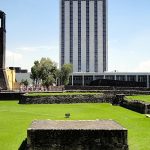
Nearest at 0.07 kms.
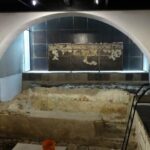
Nearest at 0.07 kms.



One of the most important sites in the city, even today, don't miss the chance to visit the Templo Mayor.
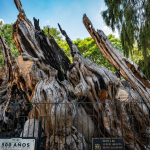
The site of the legendary defeat of Hernán Cortés in 1520, along the ancient causeway.

One of the newest and deepest of ancient museums, the Museum of the New Fire is not to be missed.
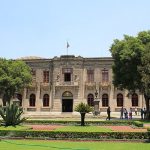
Chapultepec Castle is one of the premier sites in the city, and one of the highest you can visit, too!
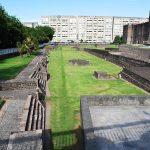
Among the most prolific of digs in Mexico City's central neighborhoods, this one keeps revealing more...